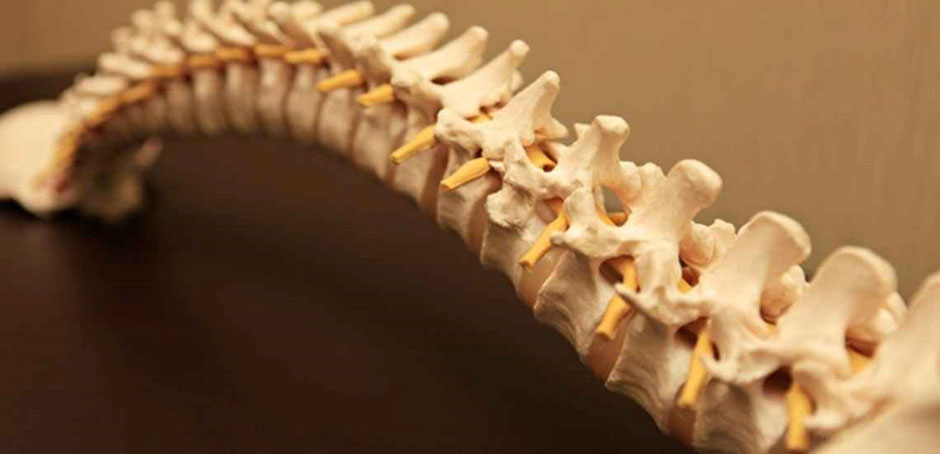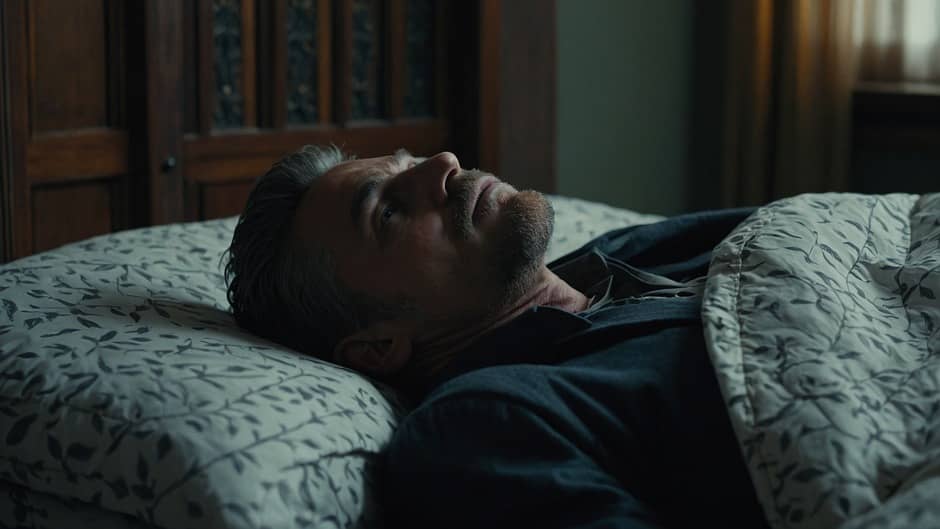Table of Contents
- Why Does My Back Hurt When I Lay Down?
- What Causes Lower Back Pain When Lying Down?
- How to Treat Lower Back Pain When Lying Down
- Bottom of the Spine Hurts When Lying Down
- Bone on Spine Hurts When Touched
- Upper Spine Hurts After Sleeping
- What Can You Do?
Why Does My Back Hurt When I Lay Down?
Hi there to all of you.
We ought to talk about something that a lot of us struggle with on a regular basis: lower back pain during sleep.
If you don’t know what’s causing it, it could be very disappointing and, shockingly, quite shocking. So let’s investigate it together to see what could be going on and how we can help you feel better.
Here, I will explain why does my spine hurt when I lay down?
What Causes Lower Back Pain When Lying Down?
Poor Sleeping Position
Your sleeping position may occasionally land on your back.
If you sleep in a posture that isn’t good for supporting your spine, you can wake up in agony. For instance, lying down on your stomach puts undue strain on your spine since it forces your spine into an unusual posture.
Mattress Issues
It’s critical to consider how effectively your mattress supports your spine.
If your mattress is too soft or too firm, your back might not get the support it needs, which could be uncomfortable. Your mattress should maintain the natural curves of your body and support the alignment of your spine.
Muscle Strain
If you’ve been lifting heavy objects, or conversely, if you’ve had an oddly real day, your back muscles might be sore. The muscles may contract or go into spasm as you attempt to rest; this is especially obvious when you lie down.
Disc Problems
Your spine’s discs serve as cushions between the bones. In the event that one of these discs bursts or gets damaged, you may experience pain that gets worse when you lie down. Lying down puts more strain on the damaged disc, which is why this happens.
Underlying Conditions
Back pain that is more noticeable at rest can also be caused by certain illnesses, such as renal or joint inflammation. It is important to consider any additional symptoms you may be experiencing while assessing whether an underlying disease could be the cause.
Also Read – Muscle Weakness In Legs – Extreme Muscle Fatigue After Exercise (2024)
How to Treat Lower Back Pain When Lying Down
Adjust Your Sleeping Position
Look for a comfortable position that also supports your spine. Your spine will remain neutral whether you sleep on your side with a pad between your knees or on your back with a cushion beneath your knees.
Check Your Mattress
If your sleeping pad is uncomfortable or outdated, now might be the perfect time to replace it. Look for bedding that provides excellent support without being overly stiff or delicate.
Use Heat or Ice
If your mattress is uncomfortable or outdated, this might be the perfect time to get a new one. Look for bedding that is neither too firm or too sensitive, but still provides excellent support.
Stretch and Strengthen Your Back
Stretching gently can help release tension in the muscles. For example, stretches like the cat-cow and knee-to-chest can be very helpful. Additionally, you can prevent further pain by strengthening your back and core muscles with exercises like using boards or scaffolds.
Consult a Professional
It’s a good idea to see a specialist or true specialist if your frustration is severe or persistent. They are able to provide a valid diagnosis and provide specific medications that are tailored to your needs.
Remember that in order to understand the underlying cause of your pain and receive the right therapy, you must seek expert assistance if you are having severe or persistent pain. Taking care of your back with healthy habits and appropriate care can make a big difference in how you feel!

Bottom of the Spine Hurts When Lying Down
Imagine that you are trying to relax while you are sleeping, but there is a nagging pain in your lower back.
It might be more than just annoying; it can make it difficult to obtain a good night’s sleep.
One typical reason of this pain could be malfunction of the sacroiliac joint. This joint aids in solidification and development by connecting your spine to your pelvis.
If it’s not functioning properly, you may have agony that gets worse at night. It might also be your mattress. If it’s overly stiff, too old, or too sensitive, it most likely won’t support your back properly.
The natural curve of your spine should be supported by your sleeping cushion. In addition to failing to offer enough support, a mattress that is either too soft or too firm could also fail to properly cushion your body.
It could be time to get a new mattress if your current one is more than seven to 10 years old. The base of the spine may occasionally hurt due to muscle strain.
Maybe you’ve been carrying heavy objects, exercising in a different way, or sitting awkwardly for a long time. Muscle tension or overuse of the lower back can be uncomfortable when one is resting down.
Bone on Spine Hurts When Touched
In summary, picture a situation in which you have a specific area on your spine that hurts when you touch it. Spinal discomfort could be the reason of this. You may experience tenderness if you have recently sustained an injury or overused the nearby muscles.
This tenderness may also be a sign of inflammation in the connective tissues or muscles. Spinal stenosis is an additional risk.
This condition is brought on by a narrowing of the spinal canal, which houses your nerves and spinal cord.
This constriction impacting on the spinal nerves can cause pain, discomfort, or even numbness.
One of the most prevalent signs of spinal stenosis is discomfort, which can be triggered by touch or certain motions. Additionally, herniated discs may cause discomfort that is particular to the spine.
If a nerve is pressed upon by the protruding disc material, your spine can go numb to the touch. Additionally, herniated circles might result in other adverse effects, including as pain that radiates down your arms or legs.
Also Read – How Much Protein On Keto Per Day? – How Much Protein A Day Do You Need To Build Muscle? (2024)
Upper Spine Hurts After Sleeping
It might be very upsetting to wake up with pain in your upper back.
This can be the result of poor sleeping posture. Sleeping on your stomach or with insufficient support is one position that can cause upper back strain and subsequent soreness.
Your pillow should support your neck and be positioned in line with your spine to avoid putting undue strain on your upper back muscles. Muscle pressure could be an additional factor.
Stress and bad posture can cause your upper back muscles to tense during the day, and this tense feeling may worsen after a restful night’s sleep.
This type of muscular strain may occur if you have been sitting at a workstation for extended periods of time or if you have been under a lot of stress.
Should your upper back pain persist, there may be a cervical spine issue at play.
An upper back and neck region might be tormented and distressed by conditions like as cervical spondylosis, which is an age-related mileage of the cervical spine, or a cervical herniation plate.
These disorders can also cause stiffness, headaches, and pain that travels up the arms.
What Can You Do?
Having a good stance is essential whether you’re standing, sitting, or resting.
Do not slouch; instead, maintain a straight spine. Sitting upright reduces the strain on your spine. Your mattress should provide equal support for your entire body.
Consider a medium-firm sleeping mat that maintains the natural bending of your spine. During you sleep, your cushion should support and align your head, neck, and spine. Back discomfort can be prevented and lessened by strengthening and extending your back muscles.
Gentle exercises and stretches help promote relaxation and better posture. Stress can lead to muscle tension, particularly in the upper back muscles.
Deep breathing, yoga, and mindfulness are among relaxation techniques that can relieve stress and muscle tension.
If your pain is severe, ongoing, or worsens over time, see a physician.
They are able to pinpoint the exact source of your discomfort and offer advice on the best courses of action, including medication, physical therapy, and other therapies. Occasionally, the troubled area can find relief by using an ice pack or heating pad.
Heat helps ease stiff muscles, while cold can lessen inflammation. Observe your movement throughout the day. Review your posture, gait, and method of lifting protests.
Ergonomics and appropriate techniques can prevent spinal stress.
Read us on Medium.




